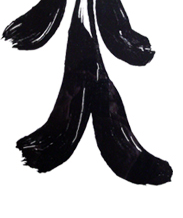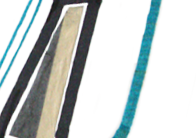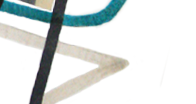November 22 – 28, 2011
Navarre Scott Momaday
Pulitzer Prize Winning author and artist, Navarre Scott Momaday, was born in Lawton, Oklahoma and spent the first year of his life at his grandparents' home on the Kiowa Indian reservation, where his father was born and raised. When he was one year old, Scott's parents moved to Arizona. His father was a painter. His mother, who is of English and Cherokee descent, became an author of children's books. Both worked as teachers on Indian reservations when Scott was growing up, and the boy was exposed not only to the Kiowa traditions of his father's family but to the Navajo, Apache and Pueblo Indian cultures of the Southwest. Momaday early developed an interest in literature, especially poetry.
After graduation from the University of New Mexico, and a year of teaching on the Apache reservation at Jicarilla, Momaday won a poetry fellowship to the creative writing program at Stanford University. Under the guidance of poet and critic Yvor Winters, Momaday earned a doctorate in English literature in 1963, and accepted a teaching post at the University of California at Santa Barbara. As his doctoral dissertation, he edited and annotated the Complete works of the 19th century American poet Frederick Goddard Tuckerman. It was published by Oxford University Press in 1965.
In 1969, his first novel, House Made of Dawn was awarded the Pulitzer Prize for Fiction. Momaday moved to the University of California at Berkeley as Professor of English and Comparative Literature. He designed a graduate program of Indian Studies and taught a popular course in American Indian literature and mythology. His long study of the Kiowa oral tradition bore fruit that year in The Way to Rainy Mountain , a collection of Kiowa tales illustrated by his father Al Momaday. That same year, he was initiated into the Gourd Dance Society, the ancient fraternal organization of the Kiowas.
His 1971 essay "The American Land Ethic" drew public attention to the tradition of respect for nature practiced by the native peoples and its significance to modern American society in an era of environmental degradation. Angle of Geese and Other Poems was published in 1974, a memoir, The Names , in 1976. A second volume of poems, The Gourd Dancer (1976) was partly written while he was lecturing in Moscow in 1974. At the same time, he took up drawing and painting seriously for the first time in his life. Since then his work has been exhibited throughout the United States. His newer books are frequently illustrated with his own paintings and etchings.
Professor Momaday left Berkeley for Stanford in 1973. Since 1982, he has lived in Tucson and taught at the University of Arizona, giving occasional lectures at other schools including Princeton and Columbia. His more recent books include: The Ancient Child (1989), In the Presence of the Sun (1991), Circle of Wonder: A Native American Christmas Story (1993), and The Native Americans: Indian Country (1993). He is also the author of a play, The Indolent Boys, and was featured in the award-winning documentary film Remembered Earth: New Mexico's High Desert. In 2007, President George W. Bush awarded N. Scott Momaday the National Medal of Arts, "for his writings and his work that celebrate and preserve Native American art and oral tradition."
Anita Luttrell Fields
Anita Fields was born in Hominy, Oklahoma, and is a member of the Osage Nation. Fields studied at the Institute of American Indian Arts in Santa Fe, New Mexico, and completed her Bachelor of Fine Arts at Oklahoma State University, Stillwater, Oklahoma.
As a professional artist, Fields exhibits her work nationally and internationally. Recent works were included in the traveling exhibits "Artrain USA's Nativeviews","Shades of Clay" and " Art From Indian Territory". Fields' sculptures were exhibited in "Changing Hands: Art Without Reservation, Part Two" in New York City, "21st Century Ceramics" in Columbus, Ohio, and "Shared Passion" at Arizona State University, Tempe, Arizona. Her work was also featured in "Two by Two", a two-person exhibit, and the 8th Native American Fine Art Invitation at the Heard Museum in Phoenix, Arizona, Her work was included in "Who Stole the Teepee?" in the National Museum of the American Indian, at the Smithsonian Institution, New York City, New York. She has also been invited to share her work in "Nourishing Hearts, Creative Hands" at Hampton University in Hampton, Virginia, at the Gilcrease Museum in Tulsa, Oklahoma, and the Peabody Essex Museum, Salem, Massachusetts. Her works were displayed among the "Avant Garde" during "Legacy of the Generations: Pottery by American Indian Women" at the National Museum of Women in the Arts in Washington, D.C.
Fields presents workshops, lectures, and residencies around the country, working with a variety of ages and audiences. In 2008, Fields was one of the three artists selected to participate in the Eitelljorg Museum's thirty-day artist-in-residence RARE program. Fields was one of forty-seven Native American delegates, funded by the Kellogg Foundation and the Institute Of American Indian Arts, to travel to South Africa during the summer of 2007 for "The Answers Lie Within"; a cultural and economic exchange between indigenous artists and educators. In conjunction with "Changing Hands, Art Without Reservation 2", Fields gave the 2007 Contemporary American Craft Master Lecture at the Philbrook Museum of art in Tulsa, Oklahoma. She was a recipient of the Andy Warhol Fine Arts Residency Program at the Heard Museum in Phoenix, Arizona, and curated "Anticipating the Dawn", a Native Women's Contemporary Invitational Exhibit and Symposium at Oklahoma State University in Stillwater, Oklahoma. The Western Heritage and Cowboy Hall of Fame Museum in Oklahoma City, Oklahoma commissioned her to create a traditional Osage "Friendship" women's ribbon work blanket.
Fields' work has been published in Southwest Art magazine, American Craft magazine, Ms Magazine, American Style, and Contemporary Ceramics, in addition to Native Peoples, Women Artists of the American West, and the Encyclopedia of North American Indians. Her work can be found in several private and museum collections, including the Museum of Art and Design in New York City, New York, the Institute of American Indian Arts Museum in Santa Fe, New Mexico, the Heard Museum in Phoenix, Arizona, the U.S. Department of the Interior, and the collection of Sara and David Lieberman.
America Meredith
Swedish-Cherokee artist, America Meredith blends traditional styles from Native America and Europe with pop imagery of her childhood. Her influences range from the Bacone school of painting, the Arts and Crafts movement, 60s cartoons, to Mississippian shell engravings.
She is an enrolled member of the Cherokee Nation. The Cherokee language and syllabary figure prominently in her work, as they are the strongest visual imagery unique to her tribe.
She works in pen and ink, serigraphy, monotype printing, and beadwork, but her primary focus is painting – in acrylic, egg tempera, gouache, and watercolor.
America earned her MFA in painting from the San Francisco Art Institute and her BFA from the University of Oklahoma. She has shown throughout the United States and in Canada and Europe in the last 15 years and has won awards at the Heard and SWAIA's Indian Market as well as at numerous competitive shows. She was a 2009 Artist Fellow of the Museum of the American, won the IAIA Distinguished Alumni Award for Excellence in Contemporary Native American Arts in 2007 and was voted San Francisco Weekly's Painter of the Year in 2006.
http://www.ahalenia.com/america/
Brent Greenwood
I am a proud member of the Chickasaw and Ponca Nations of Oklahoma. I was born November 27, 1971 in Midwest City, Oklahoma. I've been creating art ever since I could remember.
Primarily an acrylics and mixed media artist, I try to create depth and emotion in my work by the various layers of paint, washes, drips and splatters that I apply to the canvas. In much of my work, I incorporate early tribal history and bring certain elements of designs and pieces of this period back to life through my paintings.
I have been exclusively represented by Kiva Gallery in Santa Fe, New Mexico since 1998. I am also a member of the Urban Indian 5 Artists of Oklahoma. In the past, I have also served on the board of the Oklahoma Visual Arts Coalition and have also sat on the Artsplace Advisory Board. I currently reside and paint in my in-home studio in Edmond, OK.
In 1994, I graduated with an AFA in 2-Dimensional Art from the Institute of American Indian Arts . This experience not only had an impact on my life, but it definitely transformed my art. It was an amazing opportunity to be surrounded by other Indian artists, both students and instructors. Three years later I completed my BFA from the Oklahoma City University.
My most recent accomplishments include being selected by the Chickasaw Nation as their 2011 Music Festival's featured artist and the 2010 Oklahoma Native Tourism Guide's cover artist. What I am most proud of, though, is in my personal life. My wife, Kennetha and I were selected as the National Indian Parents of the Year for 2010 by the National Indian Education Association. My son told us it was because they were such great kids and we would have to agree.
I never exclude myself from other things happening in and around the art scene. My artistic inspiration is derived from other artist's work and energy. I get much of my inspiration from my family. My wife Kennetha, is Otoe-Missouria and an artist as well. My children dancing in the arena or painting by side is my purpose of being. I try my best to lead by example so that my children will realize they are capable of accomplishing anything they want in life.
Music also has a definite impact on my art. Singing is a large part of my creative being. I take pride in singing my Ponca songs at dances and in church. I continue to share this spirit by singing with my children and the youth in our community. These songs are an inspiration in my studio along with other genres such as lounge/chill, ethnic, reggae and classic rock.
Many Native artist who have inspired me over the years include: Jerome Tiger, T.C. Cannon, Alan Houser, Fritz Scholder, Kevin Red Star (living) and Bert Seaborn (living). Others include: abstract expressionist Mark Rothko, Robert Rauschenberg (living), Jackson Pollock, Andy Warhol, and Pablo Picasso. Today, there are numerous artist that continue to influence my wo
http://www.brentgreenwood.com/
Yatika Fields
I am motivated in my work fundamentally by the search for freedom in all forms. I seek to create a contemporary terrain in the juxtaposition of my living memories. Playing with elements of space and time, I create a synthesis of symbolic objects floating and bending on the canvas at all angles; negating the horizon and the rule of linear experience. In this suspended dichotomy between nature and the urban environment a new world is made. The creation mythology of this space is narrated in my work where Oklahoma meets NYC meets Boston meets Santa Fe. In the end, exploding the expectations of current experience.
www.yatikastarrfields.com/
Dana Tiger
Dana Tiger is an award winning, nationally acclaimed artist. She is a member of the Muscogee (Creek) Nation and is of Creek/Seminole/Cherokee descent. Dana was just five years old when her father, legendary artist Jerome Tiger, passed away. She turned to his art as a way to know him and that engagement, coupled with the tutelage of her uncle, renowned painter Johnny Tiger Jr., exposed Dana both to the richness of her Native American culture and to the bounty of her family's artistic tradition.
Best known for her watercolors and acrylic paintings depicting the strength and determination of Native American women, Dana's paintings now hang in galleries, universities, Native American institutions and state buildings nationwide. She has won numerous awards and art competitions including the Five Tribes Masters Art Show, the Cherokee National Holiday Art Competition and the Creek Nation Artist of the Year Award. In recognition of her accomplishments as an artist as well as an activist and community leader, Dana was inducted into the Oklahoma Women's Hall of Fame in 2001.
Dana and her husband, Donnie Blair, run the Tiger Art Gallery in Muskogee, Oklahoma, and have two children, Christie and Lisan, also gifted artists. In 2002, Dana founded the non-profit Legacy Cultural Learning Community, dedicated to nurturing Native youth via the celebration and sharing of tribal languages and culture through the arts.
Marla Skye
Marla Skye has been creating art since childhood. Influenced by her family's creativity she aspired to be an artist at a young age. Her Father a member of the Onondaga Nation is also a skilled woodcarver and artist. Marla works in several different art forms including painting, silversmithing, beading and woodcarving. She enjoys creativity and is likely to have various projects of different mediums going on at the same time in her studio.
Marla Skye is a 1997 Graduate of The Institute of American Indian Arts in Santa Fe, New Mexico, with a degree in Two Dimensional Arts. She describes her time at IAIA as one of the best learning experiences of her life. Over the years she has studied in workshop situations with well known artists including Lawrence Saufkie and Michael Kabotie. She occasionally instructs small workshops for children. The classes have an emphasis on Native American Arts and Crafts along with an educational lesson and are held at the Community Folk Art Gallery in Syracuse, New York.
Marla's work depicts a variety of themes. Animals and nature are prevalent subjects, as well as the traditional stories of the Haudenosaunee such as the Three Sisters: Corn, Beans and Squash. "My ideas come from my heritage and from the spirit of creativity that the Creator has blessed me with." Marla enjoys sharing her heritage by displaying her artwork at Native American Art Shows and Festivals and teaching children. "I think that if you have been blessed with a gift that it is important to use it and also to share it with others."
Dg smalling
My Choctaw heritage is a vital facet of my life. The Choctaw culture embraces minimalism in its traditional forms and lifestyles. i consider my work an extension of this tradition using modern materials.
When i work there is a redemptive sense of time and purpose; by this i mean that those moments squandered, ill-used, or taken from me are piece-by-piece atoned. i realize that this aberration; that time—like my lines—is experienced once. It is the attention to detail and moment which allows for swift execution of action, not the nervous reaction kind. Repetition of moment-driven life habits builds stamina and skills that inch myself closer to a life of mindfulness that in turn hones my actions.
The content and intent of these actions should be noted. Our age is accumulatively cynical; by this i mean to highlight that unlike any other époque we are aware of ourselves in terms of nature and actions. We fight and pain in ways otherwise impossible to other ages (not to say that members of past ages wouldn't do likewise if the times were reversed). The cynicism stems directly from the espoused 'enlightenment' we profess and the barbaric behavior still resident in our headlines and in our neighborhoods. By choice, i do not paint anything dark, macabre, or cynical.
There is little fixation on my part toward wars, intrigues, atrocities, injustices, or death because i have known these abasements. It is precisely because these are known to me that upon pursuing art i vowed not to depict them. What needed to be illuminated more are their converses. Innocence, more than ever, must be lauded.
For those that might think those abasements need find a place in artistic forums, i would challenge them first to experience what they comment on. The purpose of shock art is dead. Turn on CNN. Turn on Discovery Channel. Turn on History Channel. Turn on Military Channel. Turn on the web browser of the computer closest to you. Let journalists inform and let artists inspire.
Modernity has insulated individuals to the harshness of life when stripped bare. Time marches on with or without our efforts to stretch our experience of it. We know we resent hard; the real question is can we love hard.
Hock E Aye Vi Edgar Heap Of Birds
The artworks of Hock E Aye Vi Edgar Heap Of Birds include multi-disciplinary forms of public art messages, large scale drawings, Neuf Series acrylic paintings, prints and monumental porcelain enamel on steel outdoor sculpture.
Heap of Birds received his M.F.A. from Tyler School of Art, Temple University , Philadelphia , Pennsylvania , his B.F.A. from The University of Kansas, Lawrence , Kansas and has undertaken graduate studies at The Royal College of Art, London , England .
The artist has exhibited his works at The Museum of Modern Art, Whitney Museum of American Art, National Museum of the American Indian, Smithsonian Institution, New York, New York, The National Gallery of Canada, Ottawa, Museum of Contemporary Art, Sydney, Australia, Documenta, Kassal, Germany, Orchard Gallery, Derry, Northern Ireland, University Art Museum, Berkeley, California, Association for Visual Arts Museum, Cape Town, South Africa, Lewallen Contemporary Art, Santa Fe, New Mexico and Hong Kong Art Center, China.
He has served as visiting lecturer in London , England , Western Samoa , Chiang Mai and Bangkok , Thailand , Johannesburg , South Africa , Barcelona , Spain , Belfast , Northern Ireland , Norrkoping , Sweden and Hararre , Zimbabwe .
Heap of Birds has taught as Visiting Professor at Yale University, New Haven, Connecticut, Rhode Island School of Design, Providence, Rhode Island and Michaelis School of Art, University of Cape Town, South Africa. At The University of Oklahoma Professor Heap of Birds teaches in Native American Studies and Fine Arts. His seminars explore issues of the contemporary artist on a local, national and international basis.
He has received grants and awards from The National Endowment for the Arts, Rockefeller Foundation, Louis Comfort Tiffany Foundation, Lila Wallace Foundation, Bonfil Stanton Foundation and The Pew Charitable Trust.
Currently Heap of Birds is creating a fifty-foot signature, outdoor sculpture titled: Wheel. The circular porcelain enamel on steel work was commissioned by The Denver Art Museum and is inspired by the traditional Medicine Wheel of the Big Horn Mountains of Wyoming .
www.heapofbirds.com
Thomas Poolaw
As a Kiowa/Delaware youth, I was heavily influenced during the late 1960's an 1970's by the American Indian artists of southwest Oklahoma and the photography of Horace Poolaw. In 1980
I entered art school at the University of Oklahoma. Since then I have been making acrylic paintings and more recently digital images.
Process is the focus of my work. I choose formats and situations that encourage spontaneity and experimentation. The journey must be exciting and inspired. I want to produce something nearer to poetry than documentation.
My work usually deals with Native American subject matter expressed in a contemporary manner. It doesn't always have to, but that's who I am and where I come from. I hope the work reflects the status of today's Native American individual, that is complex, modern and spiritual.
www.urbanindian5.com/thomas-poolaw |








